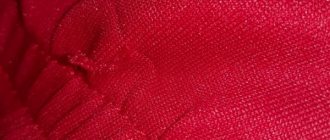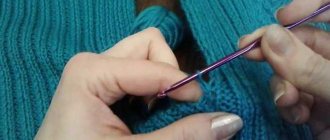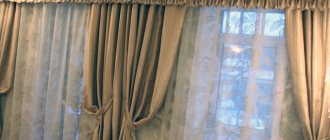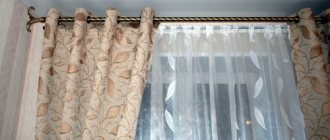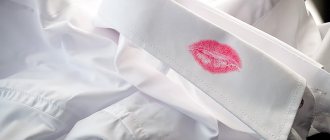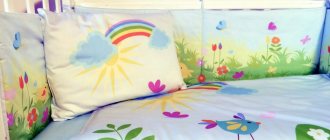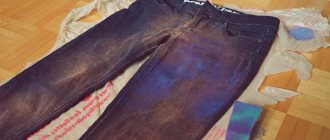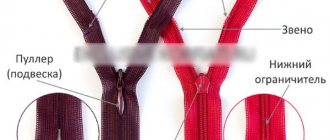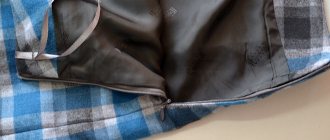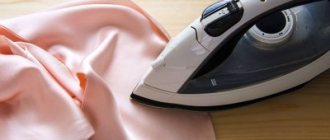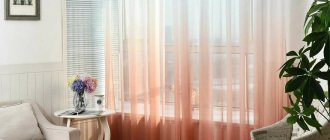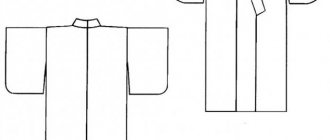Information on how to calculate pleats on a skirt will be truly useful not only for seamstresses, but also for girls who want to independently sew themselves a trendy wardrobe item today, without being professionals. Folds are one of the signs of a romantic and light style in the wardrobe, which pleases with variety and mischief.
Folds are fertile ground for real masters of sewing art, because they can be wide or narrow, located asymmetrically or stitched in even groups.
Is it possible to sew a pleated skirt yourself?
Probably the most popular question on the Internet is the question of how to calculate the pleats on a skirt at the waist without a pattern. After all, many fashionistas, in pursuit of that must-have, decide to sew their favorite wardrobe item themselves. Experts boldly share their secrets - there is a way to sew a perfect pleated skirt, you just need to use the method of solving puzzles.
The width of one fold will have to be calculated in several stages:
- First we measure the circumference of the hips.
- Determine the amount of allowance.
- We determine the number of folds we need.
- We sum up the circumference of the hips and the size of the allowance, and then divide the resulting number by the number of folds. The result is the width we need for 1 fold.
Experienced seamstresses say that the fabric will need three times the circumference of the hips, without taking into account the number of folds and their width. You will also have to add about 4 cm of allowance for freedom of movement.
What if “by eye”?!
Of course, a craftswoman who has practiced sewing and has a good eye and other talents does not use any formulas. She calculates the folds empirically. Well, let's describe this method too. To begin with, it makes sense to practice on a children's skirt made of inexpensive fabric.
Just take the fabric and fold it into a fold of the required depth and width. Next, use a measuring tape or ruler and measure these values. Then, the fabric is straightened and measurements are taken in the unfolded state. After this, you just need to count how many similar stripes you get. Naturally, the number depends on the style of the skirt and the circumference of the hips. But in any case, the number of folds must be divided by the size of one, and the result should be multiplied by the width of the fold in the unfolded state. This way you can find out the fabric consumption.
Stages of work
After deciding how to calculate the folds on a sun skirt at the waist, and carrying out the basic calculations, you can get to work. After the fabric is cut out, the panels of the skirt should be carefully pinned together along the side sections. It is important to ensure that the fabric is facing inward.
Next you should stitch the seams. Experts recommend making one seam from the very bottom to the hip line, then stitching it to the line where the edges of the fold meet (they are needed to sew in a zipper).
Carefully place a belt on the top section of the skirt. After this, you can try on the skirt, evaluating the work done. After this, we cut the depth of the fold directly at the rear edge (in this case, you should deviate from the line where the edges of the fold coincide by 0.5 cm.
Now let's move on to the other edge of the skirt. Here you need to baste a fold to the zipper so that the edge of the fold itself aligns with its line.
If you need to decide how to calculate the folds on a skirt, it is recommended to use the algorithm described above.
What makes preppy style different from other styles?
Colors. Blue, red, yellow, grey, beige, white.
Prints. Check, diamond, stripe.
Fabrics. Only natural: tweed, cotton, wool, cashmere.
Wardrobe:
- pencil skirts,
- pleated skirts,
- polo, shirts,
- knitted vests,
- half-beliefs,
- blazers,
- knee socks,
- shorts,
- chinos,
- straight-leg trousers,
- classic jackets and coats.
Shoes Moccasins, loafers, ballet shoes, oxfords, brogues.
Bags. Briefcases, backpacks, clutches, messenger bags, tote bags.
Makeup is not flashy, jewelry is not flashy, small, preferably expensive.
Many designers and global clothing brands, inspired by preppy, produce collections in this style. Some of them have built entire corporations. For example, Brooks Brothers, Tommy Hilfiger, Dsquared
Do you know how difficult it is for a mother who knows how to sew to please a teenager? I know. If previously the child was happy with every new thing he sewed, now you need to try to earn his approval.
There is an exit. You can sew basic things yourself, but from good quality fabrics. And this basic wardrobe should be diluted with a few bright designer items. Important: He/she chooses them himself .
Model with a circular fold: how to make a pattern?
The circular fold is a favorite of fashionistas from all over the world, which is why sewing workshops regularly receive orders to make just such a wardrobe detail. If for some reason you do not want to give the order to professionals, but want to complete it yourself, then you can use our recommendations.
A lot has been written about how to calculate pleats on a circle skirt or a simple skirt with circular pleats. After studying several guides from experts, you can easily cope with this task.
Before creating a pattern, you will certainly need to take the following measurements:
- OT (waist circumference).
- OB (hip circumference).
- Skirt length.
How to calculate pleats on a skirt for a waist of 64 cm? The final result will depend on the chosen model. The fabric for the pattern should be calculated so that its width is equal to the circumference of the hips multiplied by 3.
Useful Tricks
- When sewing a checked skirt, especially if the check is large, then take care to adjust the pattern of the checks. For these purposes, the length of three cells is simply added.
- Before you start calculating, cut the panels of fabric and stitch them together one-sidedly.
- It is recommended to overcast the seam and press it slightly.
- Before cutting, markings are made without fail. The proverb about “measure seven times” comes in handy here.
The depth of the folds at the waist increases, therefore, for these purposes it makes sense to carry out another calculation, but here we cannot do without a specific example. The circumference of the hips is 96 cm, and the waist is 66 cm, that is, the difference of 30 cm must be divided by the number of folds, of which there were 17. 30/17 = 1.8 cm.
It is known that the fold has two sides, which means. 1.8/2 = 0.9 cm - this is the amount that increases the depth of the stripes along the waist line.
As you can see, calculating the depth of the folds is not difficult, the main thing is to know how to do it and choose a model in advance. You will be irresistible, because the correct shape of the skirt is the key to a proportional figure.
Types of folds
Firstly, it is important that all folds are divided into parallel and non-parallel. This is not just a name, but individual options. Let's start with parallel ones. Such folds are outlined at the cutting stage - it is important to know the width and depth of the fold; the lines on the pattern are drawn strictly vertical.
They can be:
- one-sided - laid on the belt in any direction in a circular manner (for dresses and skirts they are usually laid on the left side);
- counter - the same as one-sided, only laid towards each other;
- bow - laid by analogy with the counter ones, but in the direction opposite each other;
- fan - large and multi-layered, fan folds are located on top of each other, forming a “fan” when the fold opens;
- pleated - a type of one-sided folds, often made finely, including on the sides, ironed or processed in a special way to fix the folds;
- corrugated - outwardly, a skirt with such folds is very similar to a pleated one, but if you look closely, the rigid folds resemble an “accordion”; the belt is made with an elastic band.
Non-parallel folds are those whose width varies along the entire length. That is, at the cutting stage, the lines of future folds are drawn not parallel, but wider at one end. The construction of such folds is much more difficult than working with all the previous ones; it is important to always pay attention to the calculations. You don't need a separate master class for this - just be careful.
How to cut material
To cut the fabric correctly, you need to know exactly the width and length of the finished curtain. When determining the width, you can focus on the length of the curtain rod; you can measure the length by measuring the distance from the curtain rod to the floor, or to the level where the curtain should end.
Next, you need to calculate the number of festoons and determine the distance between them. The number of scallops for the same curtain width can be different, and the finished curtain will also differ in appearance. The fewer scallops, the longer the folds will be; the more of them, the more magnificent the finished curtain will appear.
Below in the table, using the example of several options for the width of the finished curtain (if you don’t have the required option, you can do the calculations yourself) and the number of desired festoons, you can calculate the distances between them.
Having decided on the distance between the festoons, you should make marks on the stretched canvas after a certain number of centimeters. The numbers indicating the distance between the scallops are the centimeters through which it is necessary to make marks on the panel.
If the required width of the canvas is not among those indicated in the table, then you need to decide on the number of scallops and divide the width of the canvas by this number. The resulting figure will be the distance between the scallops.
For example: the width of the panel is exactly 500 cm.
Number of desired scallops = 8.
500/8=62.5 centimeters is the distance between the marks on the canvas.
When making marks on the canvas, you need to place the fabric on a flat, smooth surface, make marks on the back of the fabric at the top and bottom. A line should be drawn through both of these marks.
What determines the calculation of folds
Before we begin the calculation, we decide what folds we will make: one-sided circular or bow folds. Regardless of the choice, the fabric consumption is the same, but the calculation of the main characteristics is different.
Attention ! All calculations are made based on hip measurements.
The width is made to your taste: from 3 to 7 cm. If we design one-sided circular ones, then the width will be half the depth.
For example, choose a width of 5 centimeters. Using our measurements, the number of folds is equal to the sum of the hip circumference (98) plus the allowance (4), then the sum is divided by the width (5). The result is 20.
In bow folds the width doubles. Therefore, we do the calculation differently: we divide the measurement for the hips, taking into account the allowance (98 + 4), by the width of 10 cm. In total, we get 10 folds.
Sewing
Each fold must be folded in half, aligning the top marks. Using these marks, you need to make a 3 cm long seam without bartacks. This seam should be temporary, it is important not to secure it so that it can be easily removed when the belt is ready. Bend the folds themselves in depth in the required direction (most often it is to the side), pin them and sew them with a large stitch, making sure that the upper parts lie evenly in the seam with which the belt will be sewn. And then everything is as always - we do the assembly, you need to sew in a zipper, and then the lining, sewing in the waistband, processing the bottom. Your skirt is ready! Using this basis, you can also step by step sew yourself several skirts of a similar silhouette - they will never be superfluous.
How to calculate the amount of fabric for a skirt?
How much fabric to buy? Consumption depends on what model you want to sew. Will it be floor-length, midi (knee-length or below) or very short? With pockets or without? On a yoke? Almost straight, flared, pencil, trapezoid or curvy and wide (sun)? Fashionable styles, despite the same type of pattern, vary depending on the fabric used and the size of the folds.
If, to cut out, you took up the entire width of the fabric, place the parts one below the other. For a long skirt made of light fabric such as chiffon, you will need about 2.2 m of material (if the fabric width is 150 cm), if desired, you can shorten or lengthen it. If you are planning a one-piece belt, add another 10 cm of fabric when purchasing, but if desired, the belt can be cut from leftovers.
If you decide to go with chiffon, you will need lining fabric (for the petticoat). In general, there is no need to do more than two layers. Use a thin fabric with chiffon-like characteristics that is soft and drapes well. The lining can be long or short. The principle of constructing a pattern for it is the same as for the main skirt, but you can make a smaller number of much less deep folds. You can limit yourself to just two, for freedom on the hips.
For dense fabric, the calculations are similar.
Marking folds on fabric and assembling bow elements
Before you begin assembling pleated curtains, you need to mark the entire width of the fabric with chalk or soap. On light fabric you can use a simple pencil. A separate mathematical calculation is made for each type of fold. You can speed up this procedure using a special online calculator, which will give you the exact dimensions in a matter of seconds. Here is an example of how to calculate a bow fold.
Fixing the edges of the folds
When all the parameters have been calculated and the markings are applied to the fabric, you can begin assembling the bows. It is very important that all edges of the folds are securely fixed with thread or pins; this is the only way to prevent them from moving during the stitching process. Sewing curtains with bow pleats takes a little more time than other types of products, but the end result is worth it.
Despite the simplicity of the work, accuracy must be present, because with the slightest shift of the fabric or crease of the edge, the shape of the bow element is disrupted, which means the curtain will lose its attractiveness.
Draping textiles with bow elements is a common method used to decorate a window opening. Curtains, lambrequins and folds, equipped with folds, look attractive and stylish and fit harmoniously into the interior of any room.
